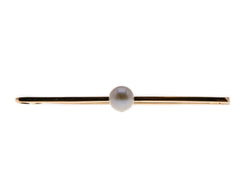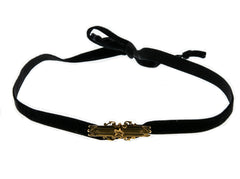AVON Of Belleville - Vintage Signed AVON (By Marcel Boucher) Rhodium Plated Austrian Swarovski Crystal Rhinestone Brooch & Earring Set (VBR086)
Rarities Antique Jewelry
AVON Of Belleville - Vintage Signed AVON (By Marcel Boucher) Rhodium Plated Austrian Swarovski Crystal Rhinestone Brooch & Earring Set. This gorgeous set is crafted from rhodium plate over metal, signed AVON which is designed by Marcel Boucher, and numbered 8647. Featuring Vintage styling, Austrian Swarovski crystal rhinestones , and quality craftsmanship. This set is made in the form of ribbons, which is set with sapphire blue and clear baguette sparkling crystals. The brooch features a pin with a secure lock mechanism, which is is perfect working order. The earrings are for pierced and non pierced ears, and are fitted with secure comfortable clip-on backings. The vintage high quality set exudes elegance, and looks stunning when worn... perfect for any special occasion.
History: Rhinestones which are also known as diamantes or paste date back as far as the thirteenth century where they were first made from Czechoslovakian or Bohemian hand blown glass. The term rhinestone came along later, when rock crystals were discovered in and around the shores of the river Rhine in Austria.
In 1895, Daniel Swarovski founded the Swarovski company with one goal in mind: to create a diamond for everyone. Having worked as an apprentice in his father's glass-cutting factory in Bohemia (now the Czech Republic), Daniel Swarovski developed an electric cutting machine that could produce crystal glass, and the iconic Swarovski crystal was born.
From the 1930s through to the 1960s, the Swarovski crystal became synonymous with glamour and fashion, - even the iconic dress worn by Marilyn Monroe during her rendition of "Happy Birthday Mr President" to JFK in 1962 was adorned with the gleaming crystals.
Today in the 21st century, Swarovski is one of the most recognizable brands in the world, and Swarovski crystals can be spotted everywhere from the red carpet to ornate jewellery, and sometimes even on cars, theatre displays and home furniture. In this blog, we're going to take a closer look at the history of Swarovski, and explore some of the most iconic moments that have cemented Swarovski as the world's leading brand in glass crystals. Let's take a look.
Marcel Boucher’s work falls under many titles and names, such as Marboux, Cartier, Mazer, Avon of Belleville. He was a prolific designer of costume jewelry and his names signify quality materials and craftsmanship. There is great information on the Internet about Marcel Boucher, including short biographies.
Marcel Boucher was born in Paris, France in 1898. His father died when he was very young and raised by a single mother, who made her living as a seamstress. During the First World War, Boucher volunteered for the Ambulanciers Corps Français, because he was the only son of a widow and would not have been sent to the front lines in the Army.
When the War ended, Boucher went to work for Cartier. Already a long established company of fine jewellery makers, Boucher worked as a mold-maker and apprentice. During the early 1920s, he learned is craft from Pierre Cartier and moved to New York to continue his practice and education. When the depression hit the United States in the late 20s, Boucher was out of work. He began freelancing and designing Show buckles. He later began working for Mazer brothers. And in 1937, he opened his own company with a partner, Arthur Halbersatdt, who worked sales and the showroom. They called the company; Marcel Boucher and Cie.
In 1936, Boucher designed his first line of costume jewelry and in 1939, sold a collection of his designs to the New York City store Saks Fifth Avenue. From 1941 to 1945 he lived and worked in Mexico City.
In 1949, Sandra Semensohn joined the Boucher Company as Boucher’s assistant replacing Halberstadt who had decided to leave the partnership.
Boucher designed the Marboux line in the early 1960s, which was less expensive and of lesser quality.
In October 1964, Sandra and Marcel were married. Six weeks later, Marcel Boucher died. Boucher left his business to his wife Sandra. She continued to run Boucher and Cie, but Sandra was a designer, not a businesswoman. She eventually sold the business to Davorn Industries in 1970. Sandra designed watches for Davorn for the next 5 years and continued to mark them “Marcel Boucher” even after the sale of Boucher and Cie. In 1979, the company was sold to D’Orlan Industries of Toronto, Canada. The workmanship and details on the jewelry now being produced from the Boucher molds by D’Orlan is of high quality but does not measure up to the older pieces produced by Marcel Boucher. The jewelry pieces have a design inventory number and are now signed “D’Orlan“. D’Orlan legitimately reproduces many of Boucher’s jewels. Their jewels are marked D’Orlan with Boucher’s design inventory number because they use Boucher’s original molds.
Collecting Boucher: Jewelry by Boucher is almost always signed (meaning a marking signifying authenticity was put on the piece) and has an inventory number on it somewhere. Some of the earliest marks say “Marboux” or “MB” or “Boucher”. If a hundred pieces were created in 1945 they would have any series of the following numbers 2300-2350 imprinted on the back of the piece of jewelry, as well as the name.
AVON of Belleville was a separate, Canadian costume jewelry company founded by Abe Mazer in 1945 in Belleville, Ontario, which produced high-quality pieces until 1971, many designed by Marcel Boucher and marked with 4-digit numbers. This company is often confused with the American cosmetics company Avon, which began producing its own jewelry much later, starting in 1963. Key distinctions include the Belleville company's Canadian origin, its Bouchér-designed pieces with numeric codes, and its significantly earlier end date of 1971 compared to the cosmetics giant's ongoing jewelry production.
Measurements: Brooch 48.00 mm x 29.00 mm Earrings 26.00 mm x 17.50 mm
Stone Size: Crystal 4.00 mm - 1.00 mm
Weight: Brooch 15.00 grams Earrings 11.60 grams
Condition: Excellent
Origin: Canada, Ontario
Date: Circa 1960
























